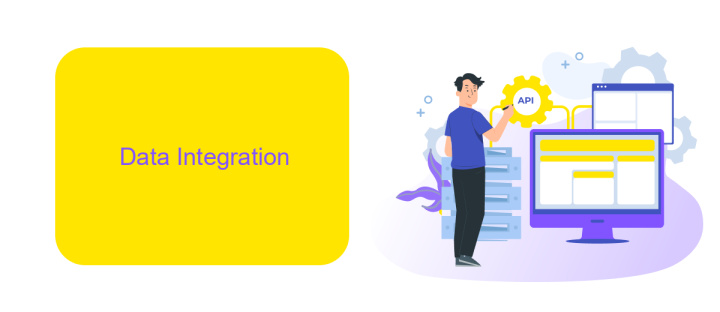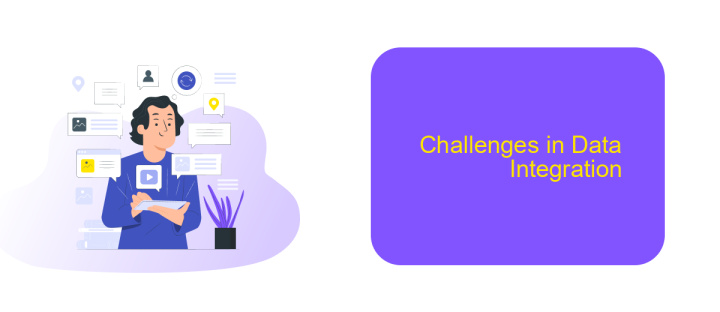Data Integration Techniques in Data Mining
Data integration is a crucial step in data mining, enabling the seamless merging of data from diverse sources to provide a unified view. This article explores various techniques used in data integration, highlighting their importance in improving data quality, consistency, and accessibility, thereby enhancing the overall effectiveness of data mining processes. Understanding these techniques is essential for leveraging data-driven insights.
Introduction
Data integration is a critical process in data mining, enabling the combination of data from different sources to provide a unified view. This process is essential for making informed decisions and gaining insights from diverse datasets. Effective data integration ensures data consistency, accuracy, and completeness, which are vital for any data-driven organization.
- Data Consolidation: Merging data from multiple sources into a single repository.
- Data Cleansing: Identifying and correcting errors and inconsistencies in the data.
- Data Transformation: Converting data into a suitable format for analysis.
- Data Enrichment: Enhancing data by adding relevant information from external sources.
One of the services that facilitate seamless data integration is ApiX-Drive. This platform allows users to automate data workflows by connecting various applications and services without requiring extensive technical knowledge. By leveraging tools like ApiX-Drive, organizations can streamline their data integration processes, ensuring that data is readily available for analysis and decision-making.
Data Integration

Data integration is a critical process in data mining that involves combining data from various sources to provide a unified view. This process ensures that data is consistent, accurate, and available for analysis. Techniques such as ETL (Extract, Transform, Load), data warehousing, and data virtualization are commonly used to facilitate integration. ETL processes extract data from multiple sources, transform it into a suitable format, and load it into a central repository. Data warehousing consolidates data from different databases into a single, comprehensive database, while data virtualization allows users to access data without needing to know its physical location.
Modern tools and services have made data integration more accessible and efficient. For instance, ApiX-Drive offers a user-friendly platform that automates the integration of various data sources. It enables seamless data transfer between applications, ensuring that information is synchronized and up-to-date. By leveraging such services, organizations can streamline their data integration processes, reduce manual effort, and enhance data quality. This, in turn, supports more accurate and insightful data analysis, driving better decision-making and business outcomes.
Data Integration Techniques in Data Mining

Data integration is a crucial process in data mining that involves combining data from different sources to provide a unified view. This process ensures that the data is accurate, consistent, and usable for analysis. Effective data integration techniques can significantly enhance the quality of data mining results.
- ETL (Extract, Transform, Load): This technique involves extracting data from various sources, transforming it into a suitable format, and loading it into a target database or data warehouse.
- Data Warehousing: A central repository that stores integrated data from multiple sources, making it easier to analyze and mine.
- Data Federation: This technique allows for querying data across multiple databases without moving the data, providing a virtual integration.
- API Integration: Using APIs to connect different data sources. Tools like ApiX-Drive simplify this process by automating data transfer and ensuring synchronization.
Incorporating these techniques can streamline the data integration process, making it more efficient and reliable. Services like ApiX-Drive can further enhance this by providing automated solutions, reducing the manual effort required and ensuring data consistency across platforms.
Challenges in Data Integration

Data integration in data mining poses several challenges that can complicate the process of merging data from diverse sources. One of the primary difficulties is ensuring data consistency and quality. When data is collected from various sources, it often comes in different formats and structures, making it challenging to standardize and clean.
Another significant challenge is dealing with data redundancy and duplication. Multiple data sources may contain overlapping information, which can lead to inconsistencies and inaccuracies if not properly managed. Moreover, integrating real-time data adds another layer of complexity, as it requires continuous updates and synchronization.
- Data consistency and quality
- Data redundancy and duplication
- Real-time data integration
- Scalability and performance
Tools like ApiX-Drive can assist in overcoming some of these challenges by providing automated data integration solutions. ApiX-Drive facilitates the seamless connection of various data sources, ensuring that data is synchronized and consistent. By leveraging such services, organizations can streamline their data integration processes, thereby enhancing the overall efficiency and accuracy of their data mining efforts.
Conclusion
In conclusion, data integration techniques play a pivotal role in the field of data mining, enabling the seamless amalgamation of data from various sources into a unified and coherent dataset. These techniques not only enhance the accuracy and reliability of data analysis but also facilitate more informed decision-making processes. By leveraging advanced methods such as ETL (Extract, Transform, Load), data warehousing, and real-time data integration, organizations can unlock the full potential of their data assets.
Moreover, the advent of integration platforms like ApiX-Drive has revolutionized the way businesses handle data integration. ApiX-Drive provides a user-friendly interface and robust tools that simplify the process of connecting disparate data sources, automating workflows, and ensuring data consistency. By utilizing such services, organizations can significantly reduce the complexity and cost associated with data integration, thereby allowing them to focus more on deriving valuable insights and driving business growth.
FAQ
What is data integration in data mining?
Why is data integration important in data mining?
What are common challenges in data integration?
How can automation help in data integration?
What techniques are used in data integration for data mining?
Apix-Drive is a simple and efficient system connector that will help you automate routine tasks and optimize business processes. You can save time and money, direct these resources to more important purposes. Test ApiX-Drive and make sure that this tool will relieve your employees and after 5 minutes of settings your business will start working faster.

